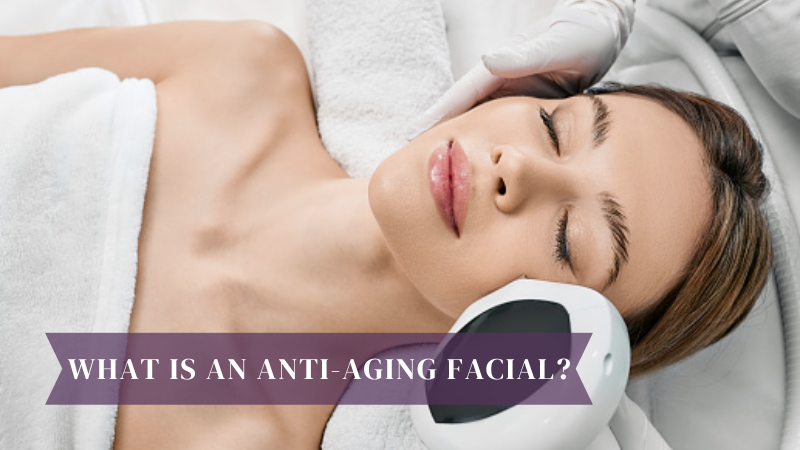Fine lines and wrinkles are not our friends. Quite the contrary, isn’t it?
Here’s the bad news: As we get older, it’s natural for our skin to start showing signs of aging.
There’s a silver lining though: Anti-aging facials.
And what is an anti-aging facial, you ask?
It is a cosmetic procedure intended to help in minimizing the appearance of wrinkles and other signs of aging on our face. They are typically performed by a licensed esthetician or skin care professional and can restore a youthful and rejuvenated appearance to our skin.
In this post, I will be sharing the benefits, what you should expect during one, and what you need to be aware of before and after an anti-aging facial.
Contents
- What Are Anti-aging Facials?
- 2 Main Factors That Cause Aging
- What to Expect During an Anti-Aging Facial
- Benefits of Anti-aging Facials
- Do I Need Anti-aging Facials?
- Anti-aging Facial Preparation and After-care
- What Else Can Complement an Anti-aging Facial?
- At-Home vs. Professional Anti-Aging Facials
- Frequently Asked Questions (FAQs)
- Conclusion: What is an Anti Aging Facial?
What Are Anti-aging Facials?
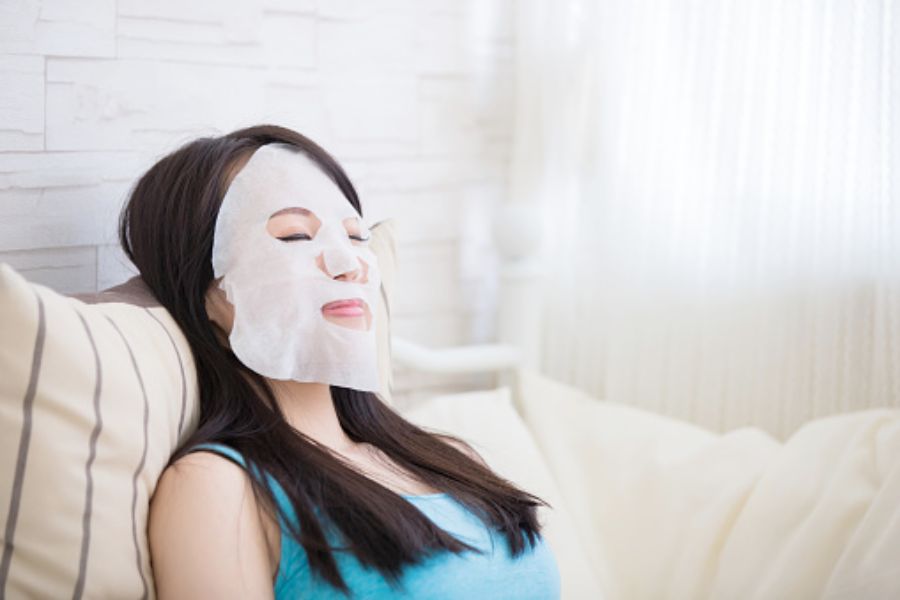
Our skin experiences many changes as we age, and being exposed to the sun, pollution, and other environmental factors can speed up the aging process drastically.
With anti-aging facials, we now get a chance to address those problems and restore the skin’s firmness and smoothness.
It might not be like a baby’s bum, but way better than what it is now.
During a session, the skin care pro will frequently incorporate a range of methods, such as exfoliation, massages, mask treatments, and the use of serums or creams that are specially designed to meet the needs of aged skin.
Even after one session, you are likely to see immediate improvements to your skin.
My first session left my face looking clearer and brought about a glow that I’ve never had.
Related: 11 Anti-Aging Tips for Your 30s: Don’t Let Your 30s Age You
2 Main Factors That Cause Aging
1. Environmental factors
Let’s start with a factor that is not entirely within our control, but one we can try our best to avoid.
Our environment can have a significant impact on our bodies and appearances.
Sun exposure brings with it Ultraviolet (UV) radiation [1]. This invisible enemy of our skin causes damage to the DNA in skin cells resulting in wrinkles, age spots, and a higher risk of skin cancer.
It also breaks down much-needed collagen and elastin, fibers that provide our skin with support and elasticity.
Next, chemicals and toxins in the air cause irritation and dryness. These can also accelerate the signs of aging by causing inflammation and damage to skin cells.
While these are hard to control, there are environmental factors that we can avoid such as smoking, poor diet, stress, and lack of sleep.
2. Genetics
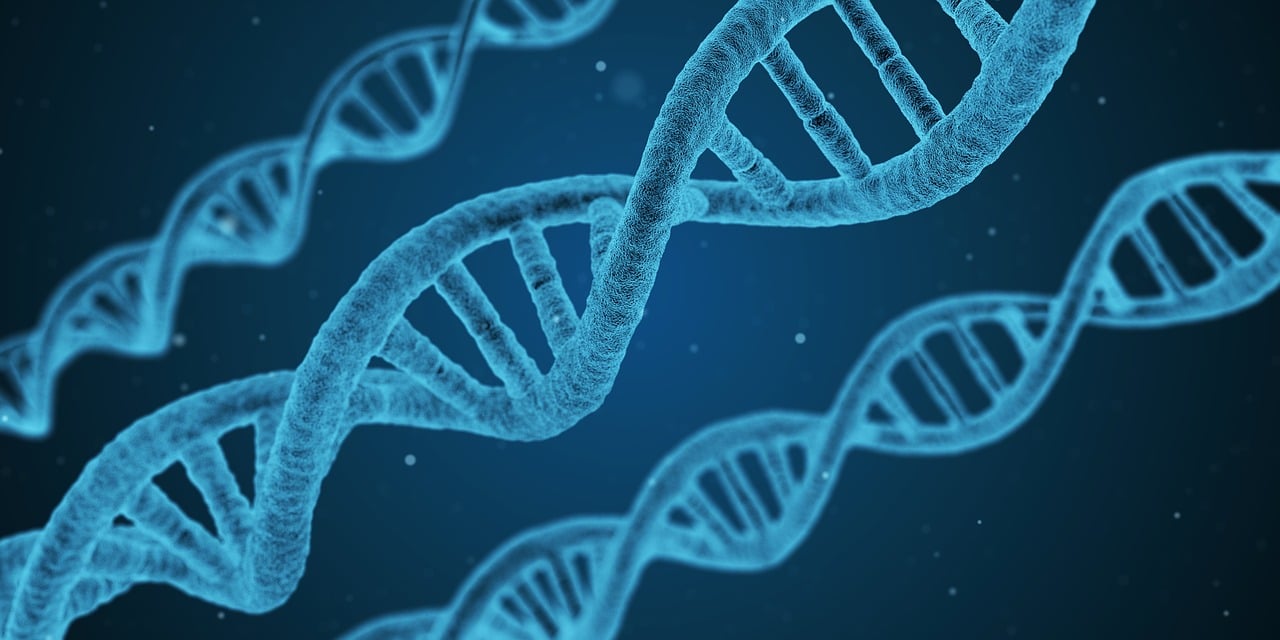
The truth is, some people naturally produce more collagen and have superior skin structure, slowing down the aging process.
In contrast, others may be more prone to wrinkles and other aging symptoms.
Within our bodies, there is a structure known as telomeres [2].
These protective caps at the ends of chromosomes shorten as cells divide, and shorter telomeres are linked to aging and can lead to cells ceasing to divide and ultimately dying.
Besides that, our bodies also produce melanin. That’s the thing that gives color to our skin.
Some of us might be more predisposed to producing more, which leads to age spots.
And lastly, fluctuating hormones in the body can wreak havoc on our skin (among many other things).
What to Expect During an Anti-Aging Facial
Never been to one? It does seem intimidating at times to step into a spa or beauty salon not knowing what to expect.
Well, it should always start with a consultation. Speak to an expert. This is when you can ask all your questions and they will help determine the best anti-aging treatment for you.
Don’t worry. I’ll break down the options for you.
Chemical peels
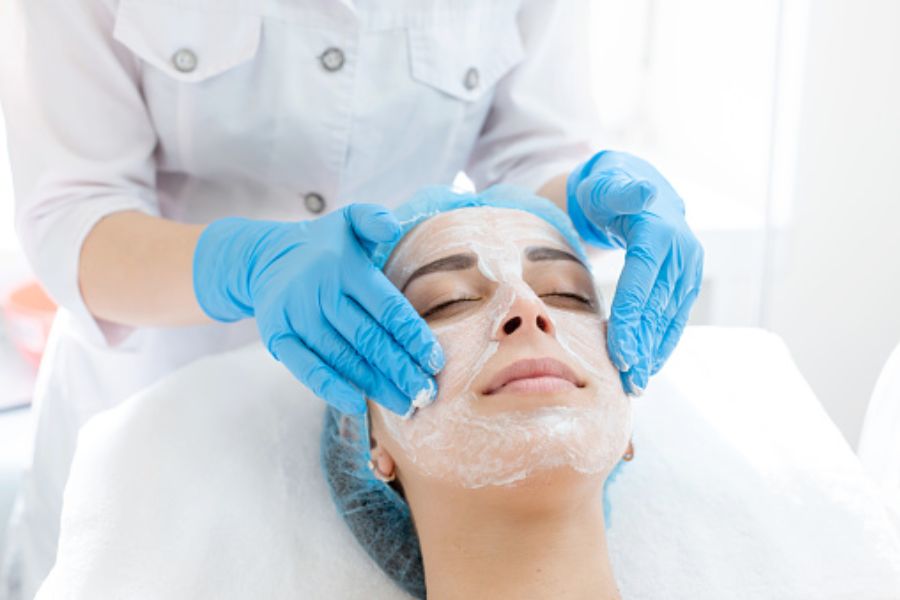
Chemical peels are an exfoliation procedure that removes the top layers of dead skin cells using a chemical solution.
They are a popular anti-aging treatment that can help in minimizing acne, age spots, fine lines and wrinkles, and uneven skin tone.
In general, they can be categorized into three different depths of penetration: superficial, medium, and deep.
- Superficial peels also referred to as lunchtime peels, are the mildest type. It aims to exfoliate the top layer of dead skin cells by using mild acids like glycolic, lactic, salicylic, or mandelic. They’re safe for all skin types
- Medium peels use stronger acids, such as Trichloroacetic acid (TCA) or Jessner’s solution. The results are more striking as they penetrate deeper into the skin, but they also take longer to recover from and may be more uncomfortable. People with darker skin tones should generally avoid medium peels due to the risk of hyperpigmentation [3]
- Deep peels use the most powerful acids, including phenol, and penetrate the skin deepest. They can treat deep wrinkles, age spots, and acne scars. However, it also comes with the longest recovery times and the greatest chance of adverse effects including scarring and hyperpigmentation
Topical creams and serums
One of the most popular anti-aging remedies is the use of topical creams and serums.
They can be quite effective in minimizing the appearance of fine lines, wrinkles, age spots, and other signs of aging as they are applied directly to the skin.
These products contain active ingredients such as retinol, antioxidants (vitamins C and E, green tea extract), collagen peptides, Hyaluronic acid (HA), and sunscreen – ingredients that are specially made to target aging symptoms and enhance the appearance of the skin.
Microdermabrasion
Microdermabrasion is a gentle exfoliation procedure that removes the topmost layer of dead skin cells using a thin spray of crystals or a diamond tip.
It can reduce the visibility of wrinkles, age spots, fine lines, and uneven skin tone.
What I like most is that it can enhance the skin’s general tone and texture pretty much instantly, giving it a more radiant and youthful appearance.
The process uses a handheld device to spray tiny crystals onto the skin and suck back up the dead skin cells. A diamond-tip wand can also be used to gently exfoliate while removing dead skin cells.
The procedure is generally comfortable and has no downtime, although some people may experience slight redness.
Since it is quite mild, this treatment is suitable for almost all skin types.
LED light therapy

LED light therapy [4], also known as phototherapy, is a non-invasive, painless procedure that improves the health and appearance of the skin.
It works on the principle that different light hues have various effects on the skin, with each color addressing particular skin issues.
For example, red light is known to stimulate collagen production and improve skin texture, reducing the appearance of fine lines and wrinkles.
Yellow Light helps to reduce under-eye bags and puffiness and promotes better circulation for improved skin health and appearance.
During a session, you will be lying down while the lights are directed at your face for around 20 to 30 minutes.
Typically, you would need 6 to 8 sessions, spaced about a week apart, for the best results.
Lymphatic drainage
Basically, this is a specific kind of massage that works to energize the lymphatic system (a system of arteries and nodes that carries white blood cells throughout the body in a clear fluid called lymph).
This massage moves the fluid and clears the lymphatic system of toxins and waste with soft, rhythmic strokes.
It reduces swelling, particularly around the face, neck, and arms, and can even help manage lymphedema, a buildup of fluid in the body’s tissues.
A trained therapist performs the massage, starting with gentle strokes and gradually increasing the pressure to deeper levels.
They may use tools such as rollers for a deeper massage.
You should know that areas like the neck, armpits, and groin are typically targeted, so if you are uncomfortable with these areas being massaged, you might want to give this treatment a miss.
Botox and fillers
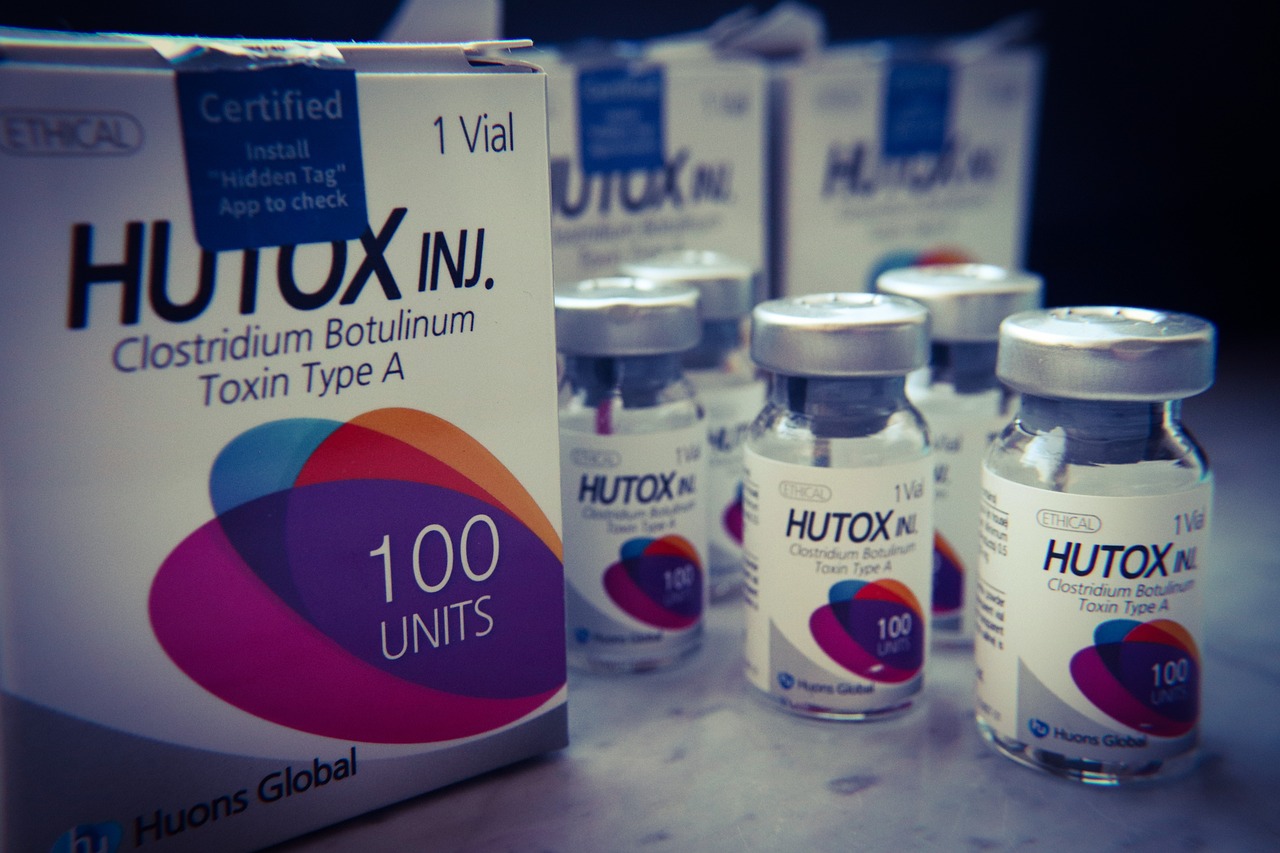
Taking the topic up a few notches is the use of injectable treatments such as Botox and other fillers.
Botox [5], or Botulinum toxin, temporarily paralyzes wrinkle-causing muscles.
It relaxes these muscles and is most often used on the forehead, around the eyes, and between the eyebrows.
Botox typically lasts between three and six months before it needs to be injected again.
On the other hand, fillers add volume and fullness to the skin by injecting ingredients like hyaluronic acid into creases and lines
Most commonly, this treatment is used to enhance cheekbones, fill in deep creases like nasolabial folds, and plump out thin lips.
Depending on the type of filler used and the area treated, the effects of fillers range from six months to two years.
Contrary to popular belief, these treatments are safe and effective.
Benefits of Anti-aging Facials
There’s no denying that these facials and treatments deliver results.
However, that does not mean you should expect miracles.
Keep in mind that these benefits may vary depending on the type of facial and the ingredients employed.
Ultimately, frequent and regular facials will yield the best results.
Here is a quick summary of how these treatments can benefit you:
- Moisturizes your skin
- Slows down signs of aging
- Minimizes the appearance of fine lines and wrinkles
- Reduces the appearance of age spots or broken capillaries
- Improves skin texture and tone
- Increases collagen production
- Exfoliates and removes dead skin cells
- Rejuvenates and makes your skin look younger
Do I Need Anti-aging Facials?
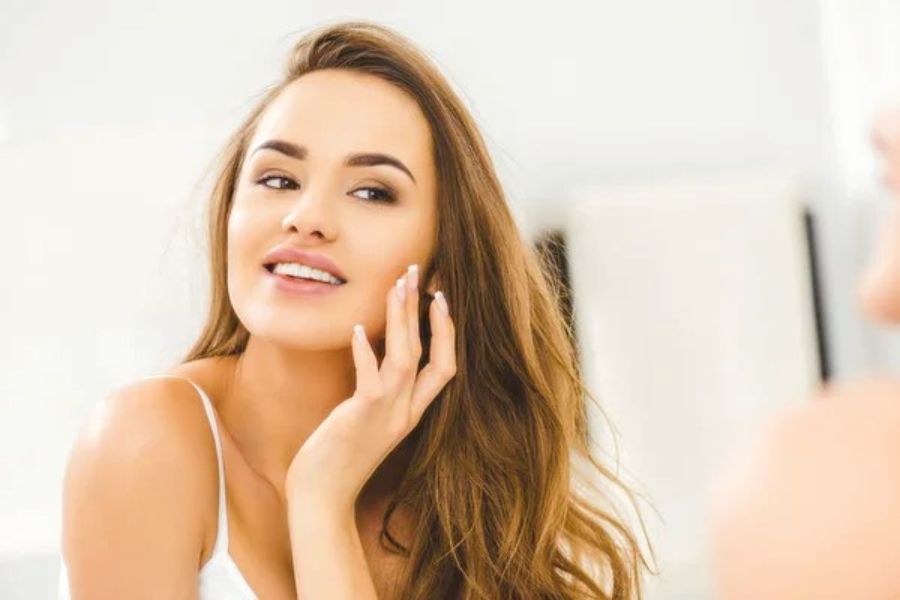
Anti-aging facials can benefit those looking to reduce the appearance of fine lines, wrinkles, and other signs of aging, as well as improve their skin’s health and appearance.
Ultimately, the decision to get an anti-aging facial depends on your personal concerns and goals
Bear in mind while anti-aging facials can be helpful, they cannot replace proper skincare habits and an active lifestyle.
A daily skincare regimen that includes sun protection, hydration, and regular exfoliation is the foundation you must establish for healthy skin.
Anti-aging Facial Preparation and After-care
To maximize the benefits of your treatment, it’s best to be properly prepared and practice aftercare.
First, prep time:
- Before your appointment, cleanse your face and avoid wearing makeup or excess oils
- Avoid sun exposure, tanning beds, and excessive alcohol consumption prior to your appointment
Aftercare:
- After your facial, carefully follow the instructions given to you by the practitioner
- Protect your skin from sun exposure and remember to apply sunscreen with at least SPF 30
- Don’t use any skincare products that contain harsh chemicals or exfoliants for at least 24 to 48 hours after your treatment
What Else Can Complement an Anti-aging Facial?
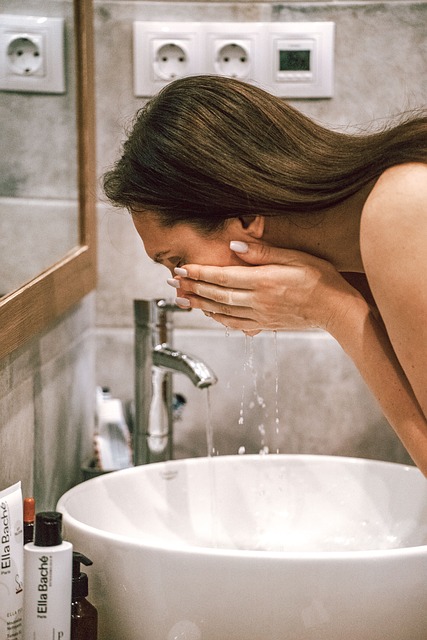
I always tell my friends: “Don’t wait until you NEED an anti-aging facial before going for one.
There are lots of things you can do to slow aging in its tracks, and here are my top tips:
- Practice sun protection
- Start a daily skincare routine
- Follow a healthy diet and stay hydrated
- Incorporate regular exercise
At-Home vs. Professional Anti-Aging Facials
Not ready to visit a skincare clinic or spa? You can always try an at-home anti-aging facial.
This option is often more affordable and offers more flexibility in terms of time and location.
Also, you can use products you are familiar with and tailored to your skin type.
Here are some options for you:
- Exfoliate with scrubs
- Use masks (i.e. clay, hydrogel)
- Apply topical creams and serums (such as LifeCell Anti-Aging Treatment)
- Try Light Therapy
Frequently Asked Questions (FAQs)
How Often Should You Get an Anti-aging Facial?
The ideal frequency of anti-aging facials will depend on your unique skin type, concerns, and the type of facial being received. To get the best results, you should book a series of facials spaced between one to four weeks apart. After that, maintenance facials can then be booked less frequently, every 4 to 8 weeks. Your skincare professional will suggest the best schedule based on your individual needs.
How Much is an Anti-aging Facial?
The cost of an anti-aging facial varies based on several factors, including the type of facial, the location of the spa or clinic, and the qualifications and experience of the skincare professional. A basic anti-aging facial typically costs between $50 and $150. However, more advanced facials can cost significantly more, ranging from $150 to $500 or more per session, especially if they include chemical peels or a combination of different treatments.
Conclusion: What is an Anti Aging Facial?
Now that you have a better understanding of anti-aging facials, it’s time to take the next step.
Will you try an at-home facial first or will you book your first appointment?
Whichever you choose, the most important thing is to start taking care of your skin early on.
Preventing irreversible aging signs should be a priority, so don’t wait until it’s too late!
References:
- https://www.cdc.gov/nceh/features/uv-radiation-safety/index.html
- https://www.genome.gov/genetics-glossary/Telomere
- https://www.healthline.com/health/hyperpigmentation
- https://my.clevelandclinic.org/health/treatments/22146-led-light-therapy
- https://www.mayoclinic.org/tests-procedures/botox/about/pac-20384658
